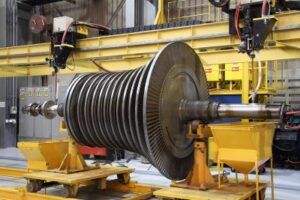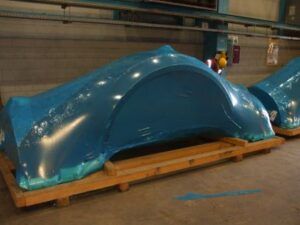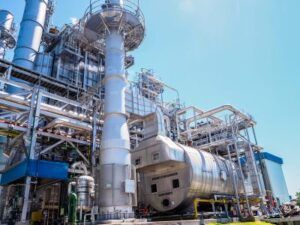Power plant chimneys spewing rust. Heat recovery steam generators (HRSGs) coughing out corrosion dust. Rusty replacement valves that cannot be installed. These are all signs of insufficient preservation leading to unexpected power plant downtime. With the price of lost revenue adding up quickly at an estimated several hundred thousand dollars an hour, an effective preservation plan is one of the easiest ways to minimize losses and promote maximum uptime to keep the lights on for customers. With nearly five decades of experience in corrosion control, Cortec® Corporation shares how and why to ensure that critical power plant assets are kept rust-free for immediate startup.
Causes of Power Plant Downtime
Routine power plant maintenance often requires workers to take boilers and other critical equipment temporarily offline. During these times, rust can quickly form in cool damp boilers and other components, leaving them worse off at the end of maintenance and delaying startup until the problem can be solved. At other times, critical or operational spares and redundant boilers or turbines are stored as backups for the main operating equipment to ensure continued power generation even in the event of failure. However, if these assets are not properly preserved, they may become corroded by the time they are needed, at which point the workers must decide between installing potentially unreliable, unsafe equipment or extending downtime while a part is ordered or restored.’

Image Courtesy of: Cortec Corp
Ensuring Power Plant Readiness with Efficient Preservation
Vapor phase Corrosion Inhibitors (VpCIs) are a simple, yet powerful, way to preserve critical spares and mainline power plant equipment such as turbines, conventional and auxiliary boilers, HRSGs, valves, and more, ensuring that these critical assets are ready to use. This technology has the advantage of protecting large and small enclosures with corrosion inhibiting vapors that form a protective molecular layer on metal surfaces. When the space is opened, the Vapor phase Corrosion Inhibitors float away, leaving behind clean, rust-free equipment. Vapor phase Corrosion Inhibitors can be fogged into boilers and turbine flow paths for internal protection. Valves, turbines, and other components can also be wrapped in plastic films—such as VpCI®-126 HP UV Shrink Film—containing Vapor phase Corrosion Inhibitors for external protection. The cost savings compared to nitrogen blanketing is significant, and effectiveness does not rely on an airtight seal, constant nitrogen supply, and heavy monitoring. Without the use of greasy rust preventatives, it is typically quick and easy to return VpCI® preserved assets to service. Most importantly, effective preservation leaves critical assets in reliable condition, uncompromised by rust.


Images Courtesy of: Cortec Corp
Improve Your Maintenance Strategy. Reduce Downtime.
If your power plant is looking for strategies to improve maintenance and reliability, be sure to consider the wide range of VpCI® solutions provided by Cortec®. Cortec’s portfolio of VpCI® fogging fluid, emitting materials, packaging, and more combine to create a tailored solution that keeps your operational assets and critical spares in rust-free condition during layup and storage. Contact Cortec® to start planning your strategy to ensure maximum power plant uptime through effective corrosion prevention.
Feature Image Courtesy of: Cortec Corp












